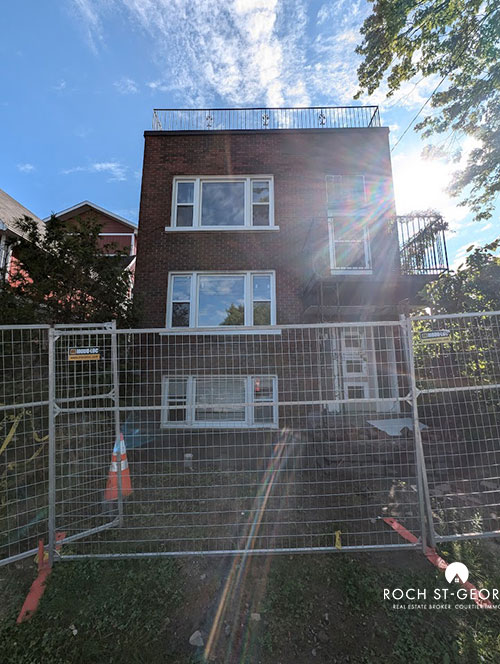How to Diversify and Manage Risk in Your Real Estate Portfolio
In the ever-evolving world of real estate, maintaining a well-balanced and diversified portfolio is key to long-term success. A thorough real estate portfolio review is an essential process that helps investors ensure their assets are optimized to withstand market fluctuations and maximize returns. By regularly assessing your portfolio, you can identify areas of concentration that may expose you to unnecessary risk and explore opportunities for diversification.
Diversification and risk management are fundamental aspects of a sound investment strategy. Diversifying across different markets, property types, and asset classes can protect your wealth from the volatility of individual investments. This comprehensive guide will walk you through the importance of a real estate portfolio review, the steps to assess your current holdings, and the strategies to diversify and manage risk effectively.

Assessing Current Portfolio Composition
Before you can diversify and manage the risk in your real estate portfolio, it's crucial to have a clear understanding of your current holdings. This step involves evaluating the types of properties you own, their locations, and the overall balance within your portfolio. By conducting a thorough assessment, you can identify areas of concentration that may expose you to higher levels of risk.
Evaluating Property Types and Locations
Begin by categorizing your properties according to their types, such as residential, commercial, industrial, or mixed-use. Each property type comes with its own set of risks and opportunities. For example, residential properties tend to be more stable in economic downturns, while commercial properties may offer higher returns but are more susceptible to market volatility.
Next, examine the geographical distribution of your properties. Are they clustered in a single city or region, or are they spread across different markets? Concentrating your investments in one area can increase your vulnerability to local economic downturns, natural disasters, or regulatory changes. On the other hand, a portfolio with properties in diverse locations can help cushion the impact of regional market fluctuations.
Identifying Concentrations and Potential Risks
After categorizing your properties, assess the balance within your portfolio. Are there certain property types or locations that dominate your holdings? If so, you may be overexposed to specific market conditions. For example, if the majority of your properties are high-end commercial real estate in one city, a downturn in that market could significantly affect your entire portfolio.
Identifying these concentrations allows you to recognize potential risks. For instance, a portfolio heavily weighted towards luxury residential properties in a single metropolitan area might suffer if there's a sudden shift in demand or an economic downturn in that region. By pinpointing these risks, you can begin to formulate a strategy to mitigate them through diversification.

Strategies for Diversification
Diversification is a key strategy for mitigating risk in your real estate portfolio. By spreading your investments across various markets, property types, and asset classes, you reduce the likelihood that a downturn in one area will significantly impact your entire portfolio. Here are some effective strategies for achieving diversification:
Expanding into Different Markets and Regions
One of the most straightforward ways to diversify your portfolio is by investing in properties across different geographic regions. This approach can help you avoid the risks associated with localized economic downturns, natural disasters, or changes in regional regulations.
For example, if most of your properties are located in urban areas, consider exploring opportunities in suburban or rural markets. These areas often present lower entry costs and may offer steady returns as more people seek affordable living options outside of major cities. Additionally, investing in different states or even countries can provide further protection against regional risks.
Incorporating Various Property Types and Asset Classes
Diversifying your portfolio across different property types is another effective strategy. Each type of real estate—residential, commercial, industrial, and mixed-use—responds differently to economic cycles. For instance, during a recession, residential properties might remain stable due to consistent demand for housing, while commercial properties could experience higher vacancy rates.
Beyond just property types, consider expanding into different asset classes within real estate. This could include direct property ownership, Real Estate Investment Trusts (REITs), or real estate crowdfunding. These alternatives can offer varying levels of risk and return, allowing you to balance your portfolio according to your risk tolerance.
By combining geographic diversification with a mix of property types and asset classes, you create a more resilient portfolio that can better weather economic uncertainties.
Risk Management Techniques
While diversification is a powerful strategy for mitigating risk, it's equally important to actively manage the risks associated with real estate investments. By adopting sound risk management practices, you can protect your portfolio from sudden market shifts and economic disruptions. Below are several techniques to help safeguard your real estate investments:
Analyzing Market Trends and Economic Indicators
One of the most effective ways to manage risk is by staying informed about broader market trends and economic indicators. Keep an eye on factors such as interest rates, inflation, employment rates, and local housing demand. These elements can have a significant impact on property values and rental yields.
For instance, rising interest rates can make borrowing more expensive, potentially lowering demand for property purchases. Similarly, high unemployment rates may reduce the number of potential tenants, affecting rental income. By keeping tabs on these indicators, you can make informed decisions about when to buy, sell, or hold properties, allowing you to adjust your strategy in response to market conditions.

Utilizing Insurance, Reserves, and Other Protective Measures
Insurance is a vital part of any real estate risk management strategy. It’s important to have the right types of insurance coverage in place for each property, including landlord insurance, liability coverage, and protection against natural disasters or other catastrophic events. Ensuring that your properties are adequately insured protects you from unexpected costs that could otherwise drain your resources.
In addition to insurance, building financial reserves is another essential measure. Setting aside funds for maintenance, vacancy periods, and emergency repairs will help ensure that you can continue to manage your properties effectively, even during difficult times. Some investors also choose to create a "rainy day" fund for unexpected downturns or market corrections.
Moreover, legal structures such as Limited Liability Companies (LLCs) can help limit your personal liability in case of lawsuits or major financial losses. These structures not only protect your personal assets but also provide tax advantages in some cases.
By implementing these risk management techniques, you can safeguard your portfolio against both foreseeable and unforeseen challenges.

Implementing Changes and Monitoring Performance
After conducting a thorough review of your real estate portfolio and identifying opportunities for diversification and risk management, the next step is to implement the necessary changes and establish a system for ongoing monitoring. This ensures that your portfolio remains balanced, diversified, and aligned with your investment goals over time.
Making Informed Adjustments Based on the Review
Once you've identified areas of concentration or potential risk, it's important to take action by rebalancing your portfolio. This might involve selling off properties that are overrepresented in your portfolio, reinvesting the proceeds into different property types or markets, or acquiring new assets that offer better diversification.
For example, if your review reveals that a significant portion of your portfolio is concentrated in a single market, consider selling some properties in that area and using the proceeds to invest in other regions with different economic dynamics. Similarly, if you find that you are overly invested in commercial real estate, diversifying into residential or industrial properties might reduce your exposure to market-specific risks.
It's crucial to base these decisions on thorough research and analysis. Evaluate the potential returns, risks, and market conditions associated with any new investments to ensure they align with your overall strategy. Remember, the goal is to create a portfolio that balances risk and reward while providing long-term stability.
Setting Up Ongoing Monitoring and Review Schedules
Real estate markets are constantly evolving, and what may be a well-balanced portfolio today could become unbalanced over time. To maintain a strong portfolio, it’s essential to establish a regular monitoring and review schedule. This allows you to track the performance of your investments and make adjustments as needed.
Consider setting up quarterly or biannual reviews to assess the performance of your properties, evaluate market conditions, and identify any new risks or opportunities. During these reviews, compare your portfolio's performance against your investment goals and benchmarks to determine if you are on track. If not, you may need to make further adjustments.
In addition to scheduled reviews, stay proactive by keeping an eye on significant economic developments or changes in local markets that could impact your investments. Being responsive to these changes will help you maintain a portfolio that is resilient and capable of delivering consistent returns.
By implementing these changes and establishing a robust monitoring process, you ensure that your real estate portfolio remains optimized for long-term growth and stability.

If you found value in this article, you may also be interested in How to Conduct an Effective Real Estate Portfolio Review for Optimal Growth, which guides you through steps to ensure your portfolio is primed for success. Another great resource is How a Real Estate Portfolio Review Can Boost Your Investments, where I discuss ways to enhance your portfolio’s performance. For a tailored strategy to meet your real estate goals and increase your investments' profitability, call me at 613-889-7732 or book a consultation at calendly.com/rochstgeorges.







